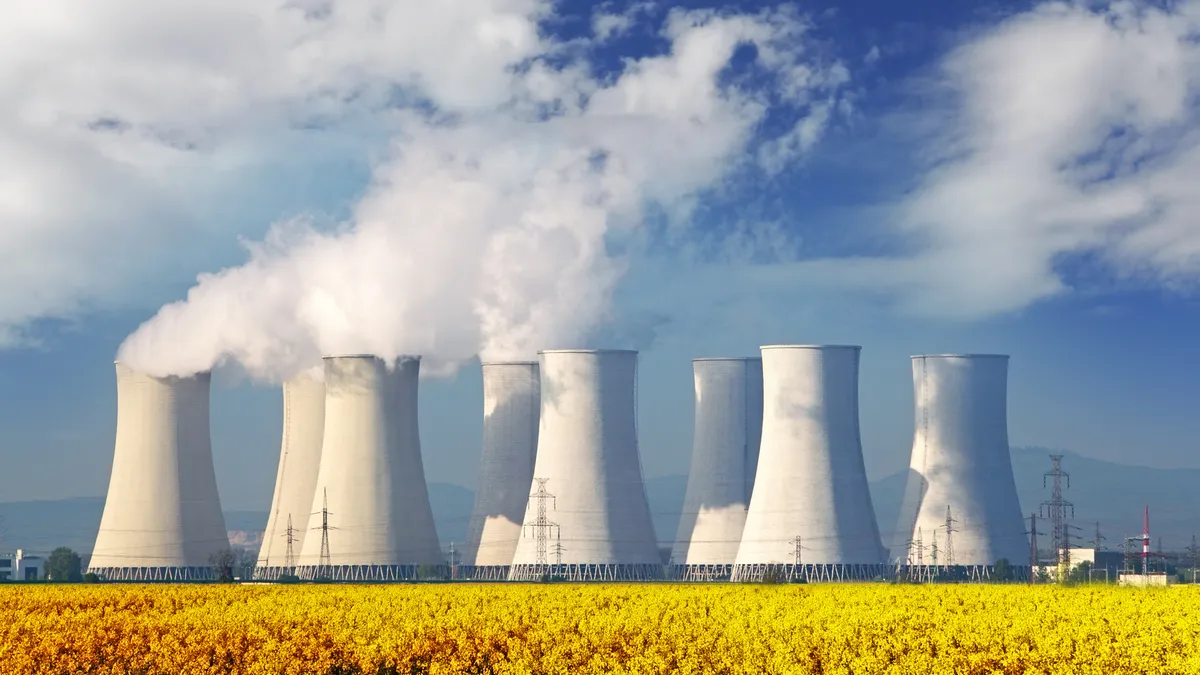Dive Brief:
- Xcel Energy is facing almost a half billion in upgrades to keep its Prairie Island nuclear facility running, leading the company to remain open to the possibility of shuttering the plant.
- The Minnesota Star Tribune reports the utility has proposed a 9.8% rate hike, and believes now may be the right time to begin considering mothballing the plant.
- The United States nuclear fleet is being squeezed by competing wind and solar resources as well as low-priced natural gas plants as about three dozen of the nation's reactors face closure from 2029 to 2035 when licenses expire, the New York Times reports.
Dive Insight:
There is a wide breadth of challenges and opportunities facing the United States' nuclear fleet: slow to change, lauded for their carbon-free generation, facing pressures from gas and struggling to modernize.
In Minnesota, regulators are considering Xcel's request for a 9.8% rate hike. The utility will need to invest $487 million by 2020, to keep the Prairie Island plant running, and more expenses are likely, the Minneapolis Star-Tribune reports.
Calling it a "fresh surprise," the news outlet said Xcel has offered up an olive branch, of sorts – proposing to study mothballing the 1,100 MW Prairie Island plant. The utility isn't pressing the option, but has put the idea in front of the Minnesota Public Utilities Commission.
While gas and renewables are pressuring nuclear plants, it could be smaller reactors which replace the aging fleet of behemoth generators. The Department of Energy (DOE) is planning to spend more than $450 million to get licensing of the smaller facilities up and running. Small modular reactors (SMRs) could potentially be constructed offsite, would have advanced safety features, smaller capacities and shorter development times.
Federal officials last month announced they had reached an agreement that could support the siting of SMRs within DOE’s Idaho National Laboratory site.
The industry, in concert with the federal government, is quickly moving to develop solutions. As the New York Times points out, more than a third of the country's nuclear capacity could face retirement from 2029 to 2035, a total of three dozen plants with licenses set to expire. An analysis from three major rating companies last year has said up to 11% of the U.S. nuclear generation fleet is at risk for early retirement. While many factors have contributed to the decline in the nuclear generation, the dominant issue of late has been rock-bottom natural gas prices, the analysts have said. The industry still provides about 19% of the nation's power.
The New York Times interviewed Michael McGough, chief commercial officer of NuScale Power, which could be the company farthest along in the development of an SMR.
“It’s a 25-year process, no matter what,” McGough said. NuScale Power is aiming to supply Utah Associated Municipal Power Systems with power from up to a dozen SMRs by sometime around 2025. “It’s improbable to me that you will see any new design developed or licensed in a much shorter time frame than the kind we’re on,” McGough said.
Using a "nonnuclear prototype," the news outlet reports NuScale has been testing its design for more than a decade, and intends to submit an 11,000-page application to federal regulators later this year.















